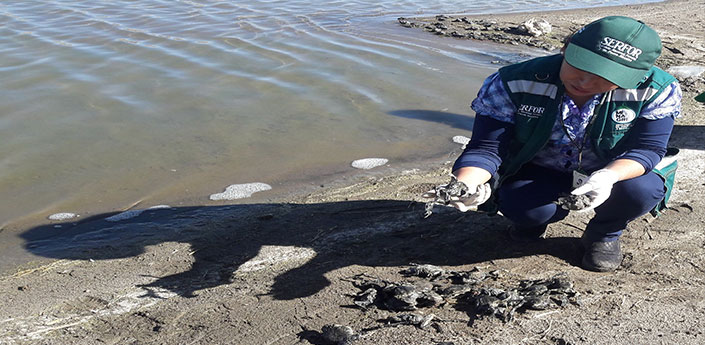At least 10,000 dead frogs were found along a 50-kilometre stretch of the Costa River in Peru.

The Titicaca water frogs, also known by the unfortunate name scrotum frogs, are one of the largest frogs in the world. They are listed as critically endangered according to the IUCN Red List.
READ MORE: Bee species added to endangered list for first time in US
According to Peru’s National Forest and Wildlife Service (SERFOR) the frogs were found on both sides of the river, which feeds into Lake Titicaca.
There is no immediate cause for the massive die-off, though investigators did note the “presence of solid waste and sludge.”
Roberto Elias, who studies Titicaca frogs for the Denver Zoo, told The Guardian only toxins could cause such a high number of deaths. He also said that recently villagers had been cleaning garbage from the basin which could have stirred up sediments, possibly exposing them to pollutants.
Another possibility is the presence of raw sewage that makes its way into Lake Titicaca or pesticides.
- Invasive strep: ‘Don’t wait’ to seek care, N.S. woman warns on long road to recovery
- Ontario First Nation declares state of emergency amid skyrocketing benzene levels
- T. Rex an intelligent tool-user and culture-builder? Not so fast, says new U of A research
- Do Canadians have an appetite for electric vehicles? Experts are divided




Comments